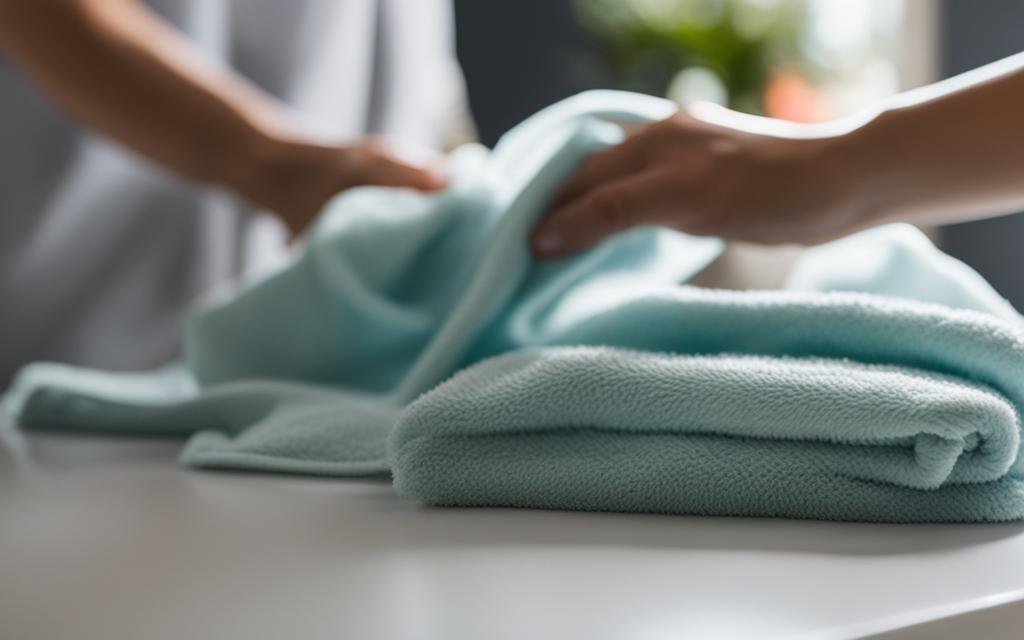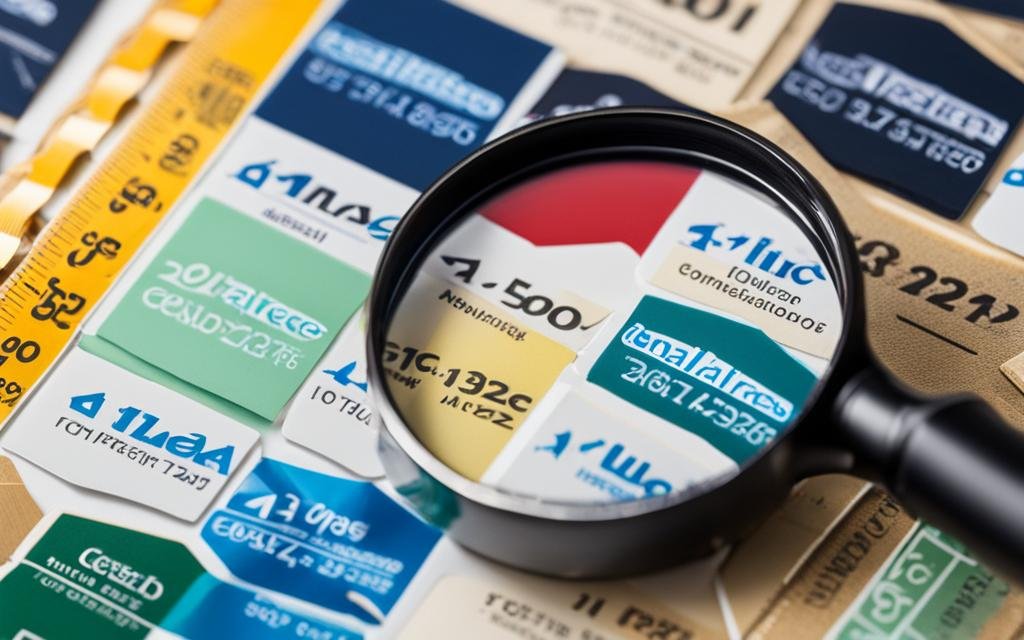When it comes to buying a heated blanket, there are several important considerations to keep in mind. From the type of blanket to safety features and additional options, it’s crucial to make an informed decision before making a purchase.
Key Takeaways:
- Consider the type of heated blanket that suits your needs, whether it’s an under blanket, heated throw, or chair heater.
- Pay attention to key features such as controllers, fastening mechanism, heat settings, timer, size, connector, safety features, and temperature sensor.
- Follow the proper cleaning and maintenance instructions to ensure the longevity of your heated blanket.
- Electric blankets are energy-efficient and can help save on heating costs compared to other heating options.
- Price ranges vary for heated blankets, so consider your budget and desired features.
Types of Heated Blankets and Their Uses
When it comes to heated blankets, there are different types available to suit your specific needs. Understanding the different options will help you make an informed decision before making a purchase.
Under Blankets
An under blanket is designed to be placed directly on your mattress, providing warmth and comfort while you sleep. This type of heated blanket is ideal for those chilly nights when you need extra coziness in bed. Under blankets are available in various sizes to fit different bed dimensions.
Heated Throws
If you’re looking for a versatile heated blanket that can be used both in bed and on the couch, a heated throw is a perfect choice. These blankets are lightweight and portable, making them easy to use and move around. You can cozy up with a heated throw while watching TV or reading a book, or you can place it on your bed for added warmth.
Chair Heaters
For those who prefer to stay warm while sitting in a chair, there are heated blankets specifically designed to heat chairs. These blankets are equipped with straps or elastic corner straps to secure them in place. Whether you’re working at your desk or relaxing in your favorite armchair, a chair heater will keep you comfortably warm.
Consider your intended use and preferences when choosing the type of heated blanket that best suits your needs. Whether you opt for an under blanket, heated throw, or chair heater, you’ll be able to enjoy the soothing warmth and cozy comfort provided by these versatile blankets.
Key Features to Look For
When selecting a heated blanket, there are several key features that you should consider to ensure you choose one that meets your specific needs.
Controllers
One important feature to look for is the number of controllers. If you have a double bed, you may want a heated blanket with dual controllers so that each person can control their own side of the bed independently.
Fastening Mechanism
The fastening mechanism is another important consideration. Some blankets come with a strap or elastic corner straps to hold them securely in place, ensuring they don’t slip or move around during the night.
Heat Settings
The heat settings on a heated blanket allow you to customize your comfort level. Look for a blanket that offers multiple heat settings, so you can adjust the temperature to your preference.
Timer
A timer feature can be useful if you want your heated blanket to automatically switch off after a certain period of time. This can save energy and offer peace of mind if you tend to forget to turn off appliances.
Size
Make sure to choose a heated blanket that is the right size for your needs. Consider whether you want it to cover just yourself or if you need a larger size to accommodate multiple people or a larger bed.
Connector
The connector on the heated blanket should be flat and close to the edge to ensure it doesn’t get in the way or cause discomfort while you’re using the blanket.
Safety Features
Ensure that the heated blanket you choose has safety features such as overheat protection. This will automatically shut off the blanket if it reaches a certain temperature, providing peace of mind and preventing accidents.
Temperature Sensor
Look for a heated blanket with a temperature sensor that can automatically adjust the heat based on the room temperature. This feature ensures that the blanket maintains a comfortable temperature throughout the night.
Cleaning and Maintenance
Proper cleaning and maintenance are essential to ensure the longevity and performance of your heated blanket. By following these washing instructions and care guidelines, you can keep your blanket in excellent condition for years to come.
Washing Instructions:
- Always check the manufacturer’s instructions before washing your heated blanket. Some blankets may require specific care.
- Most electric blankets are machine washable. Use a gentle cycle with cold or lukewarm water.
- Do not use bleach or harsh chemicals, as they can damage the wires and fabric.
- Remove the power cord and controller before washing.
- Place the blanket in a laundry bag or pillowcase to protect it during the washing process.
Drying and Storage:
- Avoid tumble drying your heated blanket, as it can damage the internal wiring. Instead, hang or lay the blanket flat to air dry.
- Make sure the blanket is completely dry before storing it.
- When storing the blanket, roll it up loosely to prevent creasing. Avoid folding or cramming it into a small space, as this can damage the wires.
- Store the blanket in a cool, dry place away from direct sunlight and moisture.
Inspection:
Regularly inspect your heated blanket for any signs of wear or damage. This includes fraying wires, loose connections, or noticeable changes in heat distribution. If you notice any issues, stop using the blanket and contact the manufacturer for repairs or replacement.
By following these cleaning and maintenance tips, you can ensure that your heated blanket remains clean, safe, and in optimal condition. Take the time to properly care for your blanket, and it will continue to provide cozy warmth for many seasons to come.

Energy Efficiency and Cost Savings
When it comes to staying warm during those chilly winter nights, electric blankets provide both comfort and cost savings. Understanding the energy efficiency of these blankets can help you make an informed decision about your purchase. By comparing running costs and considering energy consumption, you’ll be able to find the most economical option for your needs.
Compared to plug-in heaters and gas central heating, electric blankets are a much more energy-efficient choice. On average, electric blankets cost only around 3p per hour to run. In contrast, plug-in heaters can cost up to 51p per hour, while gas central heating can range from £1.36 to £4.41 per hour. The significant difference in running costs makes electric blankets a practical and cost-effective solution.
Calculating the running costs of your electric blanket is relatively straightforward. Start by determining the wattage of your blanket, which you can usually find on the packaging or user manual. Then, check your electricity unit rate, which is the price you pay per kilowatt-hour (kWh). Multiply the wattage of your blanket by the number of hours you expect to use it, and divide that by 1,000 to convert it to kilowatts. Finally, multiply the result by your electricity unit rate to find the estimated cost of running your electric blanket.

Key points:
- Electric blankets are an energy-efficient way to stay warm during the colder months.
- Compared to plug-in heaters and gas central heating, electric blankets have significantly lower running costs.
- To calculate the running costs of your electric blanket, multiply the wattage by the number of hours used and multiply that by your electricity unit rate.
Price Range and Considerations
When it comes to purchasing a heated blanket, there are several factors to consider, including the price range and the different options available. Here, we will explore the price range of heated blankets and provide some considerations to help you make an informed decision.
Under Blanket: The price range for under blankets starts at around £40 for a basic single bed size. As you move up to larger sizes or ones with dual controls for double beds, the price increases accordingly.
Throw: Heated throws are another popular option, offering versatility for use on sofas, chairs, or beds. The price range for throws generally starts around £50 or more, depending on the size and additional features.
Portable Heaters: If you require more heat or prefer alternatives to heated blankets, there are other options to consider, such as plug-in or portable heaters. These come in various price ranges depending on the type and features you need.
Key Considerations:
- Budget: Determine your budget before starting your search, as it will help narrow down the options that fit within your price range.
- Features: Consider the features you require, such as different heat settings, timer functions, and safety features. These may affect the price of the heated blanket.
- Size and Controls: Choose the size of the blanket based on the area you want to cover. Additionally, if you have a larger bed or share a bed with a partner, dual controls may be necessary.
- Brand and Warranty: Research different brands and check customer reviews and warranty information to ensure you choose a reputable and reliable heated blanket.
By considering the price range and these key factors, you can make an informed decision that fits your needs and budget when purchasing a heated blanket.

Conclusion
In conclusion, the Heated Blanket Buying Guide provides essential considerations to help you make an informed purchase. By understanding the different types of heated blankets, key features to look for, cleaning and maintenance requirements, energy efficiency, and price range, you can select the best heated blanket that suits your needs.
Choosing the right heated blanket offers numerous benefits, including staying warm and cozy during cold weather. Additionally, electric blankets can potentially save on heating costs, making them an energy-efficient choice. By calculating the running costs and comparing them to other heating options, you can make a cost-effective decision.
Remember to consider factors such as the type of heated blanket, safety features, size, and connector options. Additionally, make sure to follow the recommended washing instructions, perform regular inspections, and store the blanket properly to ensure its longevity. With the Heated Blanket Buying Guide as your reference, you can confidently purchase the best heated blanket for a comfortable and cozy experience.

